
Rockhounding & Prospecting for Gold: Behind the Scenes
In today’s post, Jim Magnuson, author of Rockhounding & Prospecting in the Upper Midwest, takes us on a gold-finding expedition. Follow along!
I’m up early and ready for a day of gold prospecting with Don Hamm, a seasoned veteran with a passion for gold that’s hard to contain. I’m barely out of my car when Don is walking up to me, extending his hearty greeting: “Welcome to the Gold Prospecting region of the Black Hills, South Dakota!” At the bottom of Don’s driveway is a large collection of mechanical equipment featuring gold-prospecting and recovery machines and tools for both hobby and commercial-grade activities. More about this later.
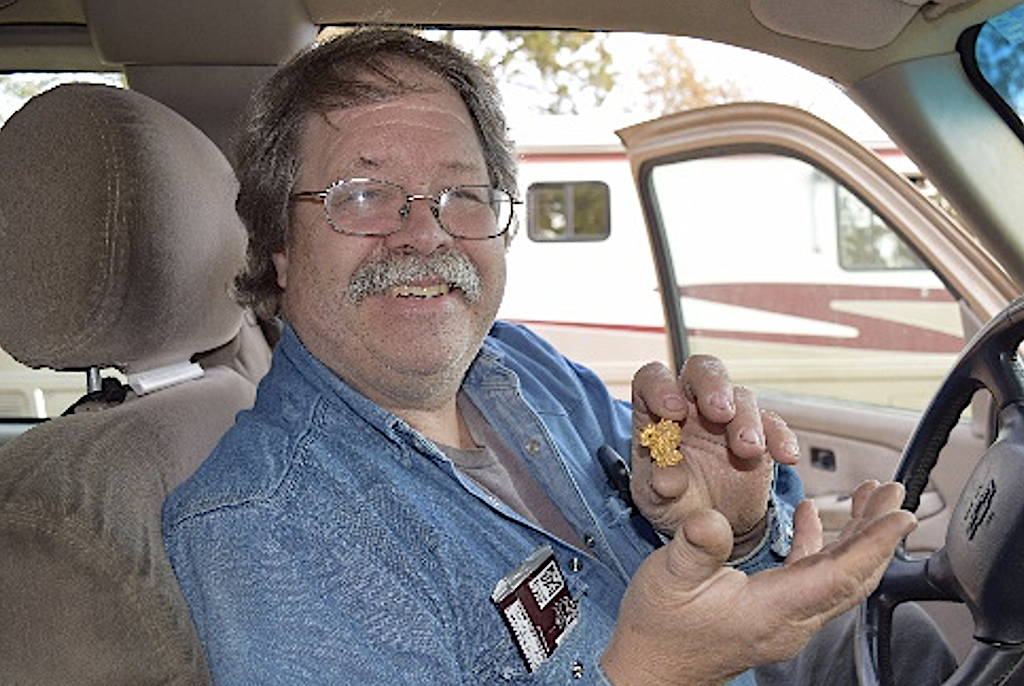
Before meeting with Don in person, I told him we would be targeting beginner and some intermediate gold prospectors. I’ve also let him know that, while the history of gold prospecting and mining in the Black Hills is greatly interesting to me, we will be laser focused on tools, equipment, and process. Throughout the day, Don will point out historical places and events as they relate to the storied history of gold in the Black Hills, but he will quickly bring things back to how that history informs current-day prospecting. Don and his father and brother are part of this history, as they ran a small commercial gold-mining operation for several years.
Don loves to share his knowledge and expertise, as evidenced by his appearance in several magazine and book publications, as well as his ongoing participation in the Black Hills Prospecting Club, where he has served as club president for many years. Also, throughout the day, he’ll continually “test” my understanding of what he has shared by peppering me with questions and then providing clarifications, corrections, and helpful tips for beginning prospectors. His inputs are given in a direct manner—something I’m grateful for because there is virtual gold in his gained wisdom!
We’re driving towards our first prospecting site, Don pointing out geological information along an eroded embankment. Then he stops and hops out of the car. I’m trying to keep up physically, mentally, and photographically as he points out things like tumbled quartz stones that are a good indicator of the presence of placer gold fines (i.e., gold that has weathered out of the host quartz that it formed within). And he points out “mica schist fingers/ riffles,” which are weathered schist with ridges and deep grooves that placer gold fines might have settled into. Don leaves nothing to chance, walking me right up to each thing he’s explaining and making sure I am seeing, touching, and understanding.
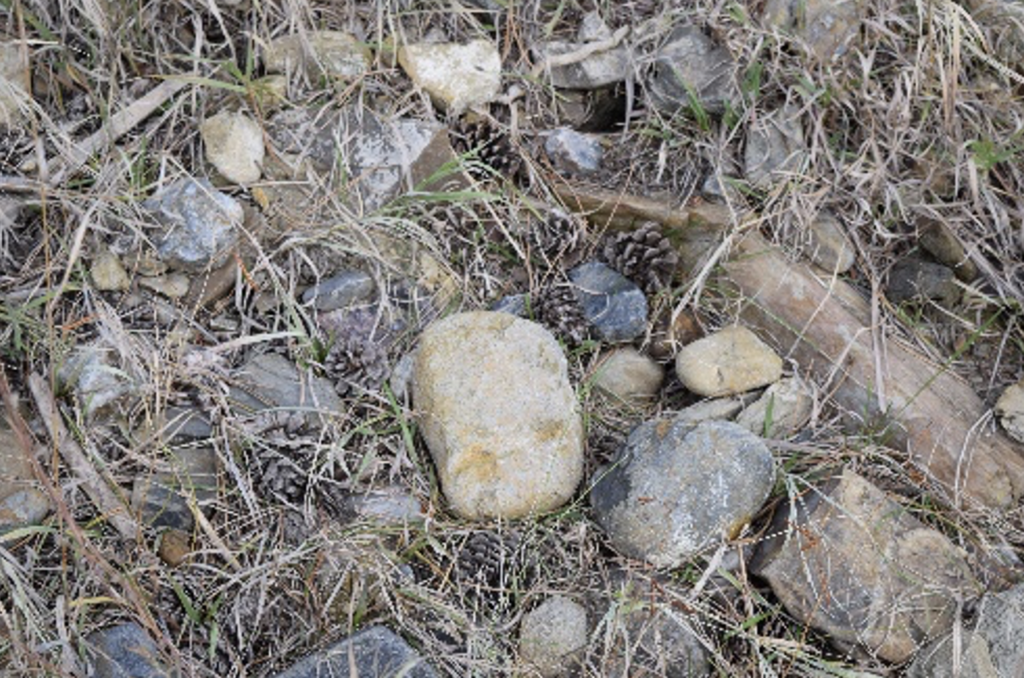
Riding behind us is a trailer that has all the essentials for a busy day of gold prospecting, including the modern-day “mule”/ ATV that’s sporting a Gold Prospectors Association of America decal; Don has been a member for as long as he can remember.
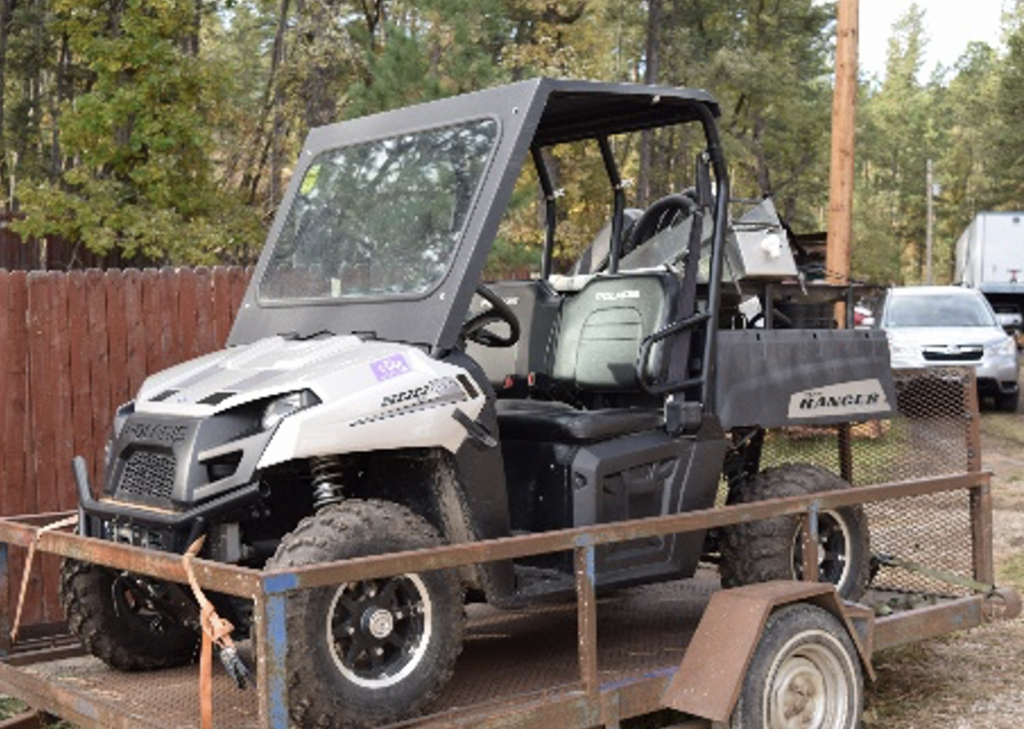
Don pulls off the road and parks alongside a creekbed. This will be our primary prospecting site; once again, Don is talking about why he stopped here as he unloads the gear we’ll be using—simple stuff like shovels, trowels, buckets, a gold pan, classifier screens, and a stream sluice.
As we walk down towards the stream, Don is using his free hand to point out the topographical and geological features that “speak gold” to him. The landscape in front of us has significant sloping with bedrock outcroppings that have wide and sweeping bowl-shaped formations, evidence of much larger rivers that flowed through the area, weathering out quartz veins and gold within them. Don reminds me that gold is the heaviest mineral on Earth, so it is always going to keep moving downwards. He selects a bedrock formation about 30 feet from the creekbed for us to do some digging. After removing the topsoil and grass, he literally scours the flat bedrock surfaces clean and places all the dirt in a bucket for sluicing. He even scrapes out dirt from the crevices in the rock with a flathead screwdriver.
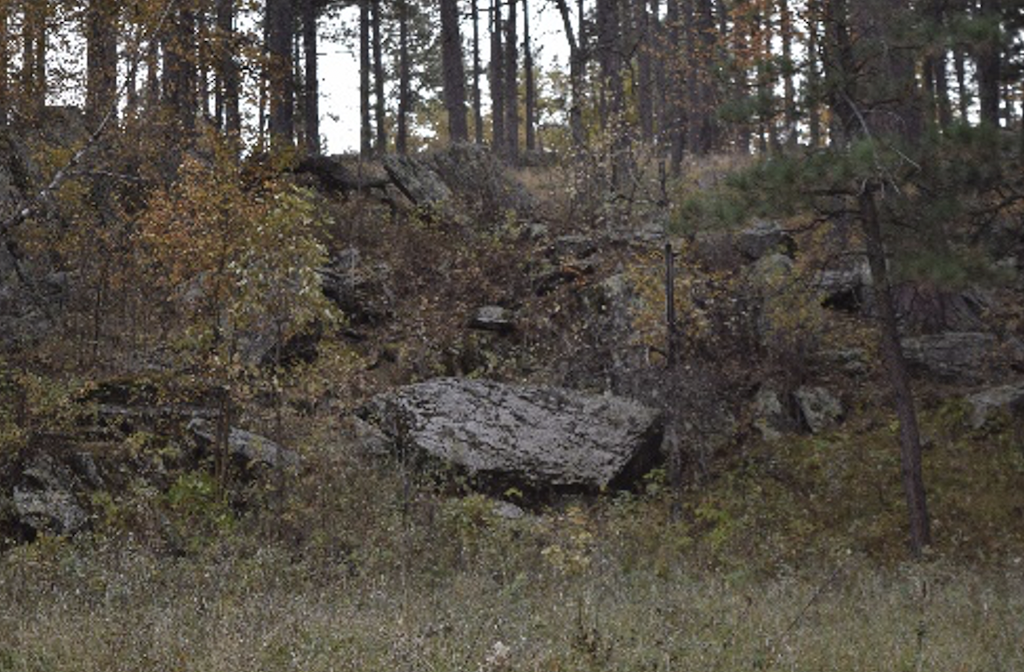
Now it’s time to set up the stream sluice, so Don is assessing the current and looking for a spot where he can channel the stream by placing a few boulders and wedging the stream sluice in between. He’s telling me that we need to have good “action” on the riffles to free the gold from the dirt, so that it can settle in the gold mat. All the equipment and tools Don is using have a worn and weathered look, as in they have been used to process a lot of material and they’ve undoubtedly paid for themselves many times over. Chief among these is the trusty gold pan; Don will remind me (and show me) numerous times throughout the day that “it always starts and ends with the pan.”
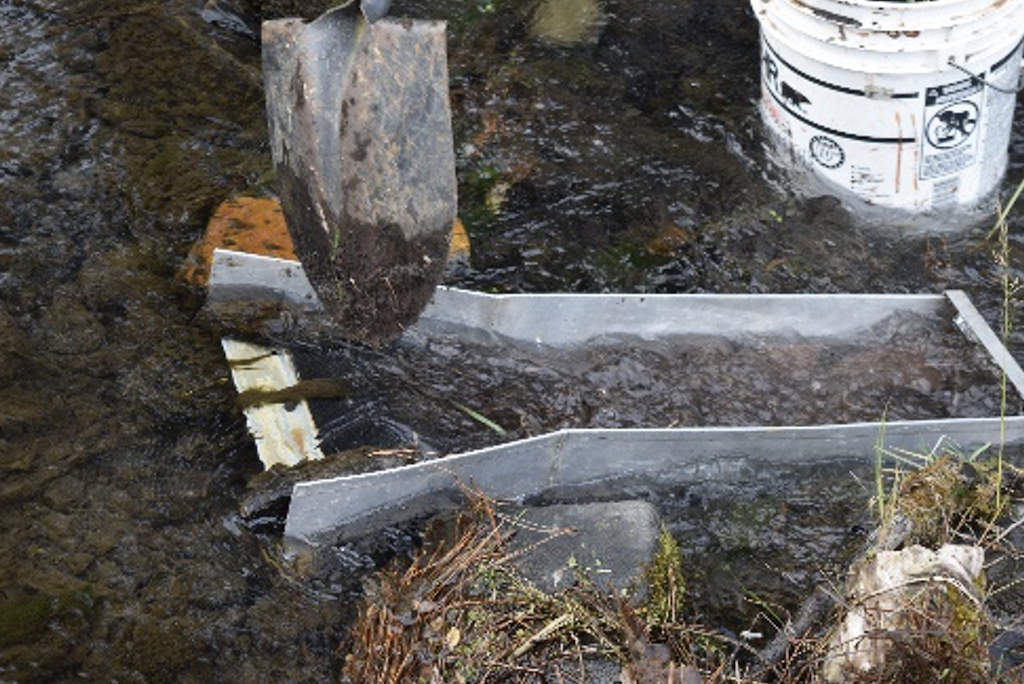
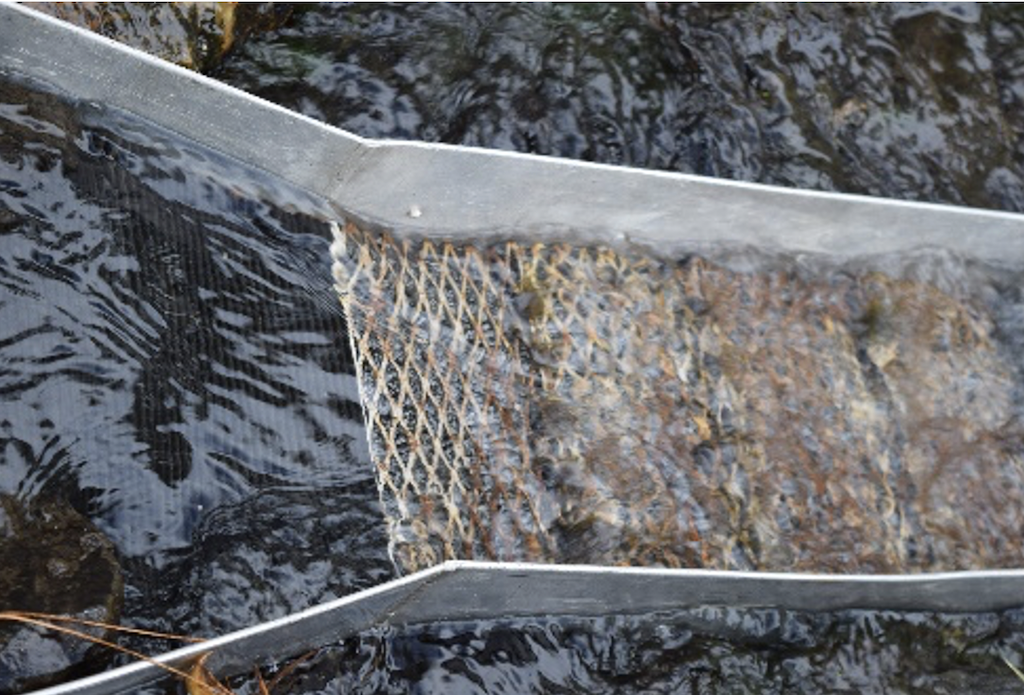
After carefully running all our “pay dirt” through the stream sluice, we do the sluice box cleanup process. First we move the boulders back to where they were in the stream to ensure we aren’t disrupting wildlife and the natural flow. Don is talking through the process steps and letting me know that each one is important to ensure all the hard work up to this point isn’t for naught. Finally, we have a small amount of remaining dirt that Don carefully washes into his gold pan and takes over to the bank by the stream.
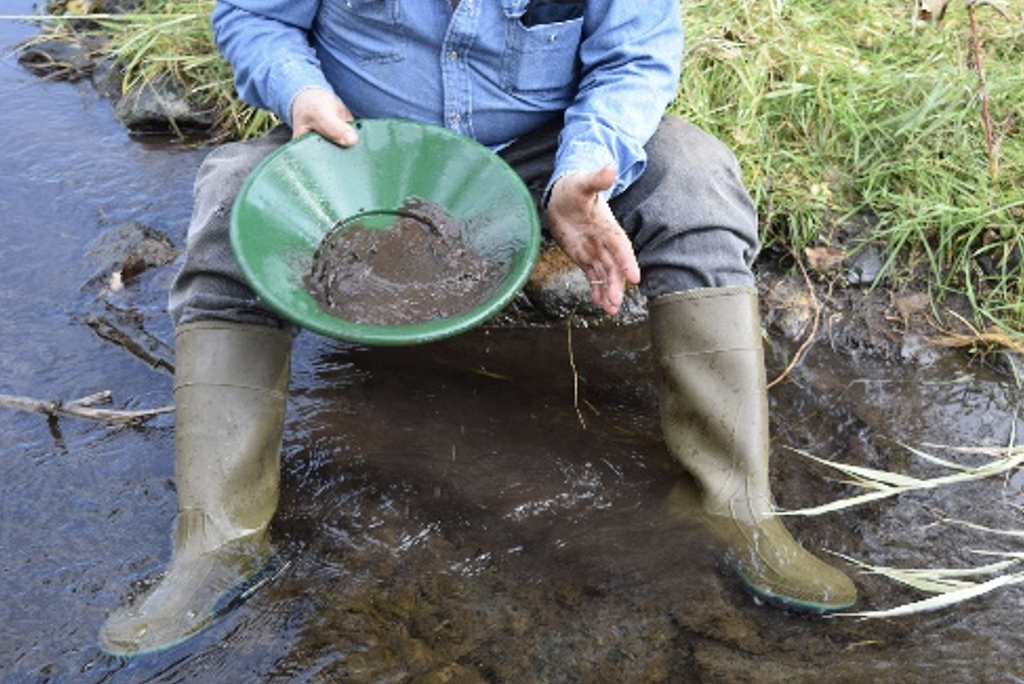
He masterfully works the panning process and stops occasionally to show me how lighter weight material is washing out and heavier material like gold and black sand are remaining. Black sand is a particulate form of hematite and is one good sign that there might also be gold fines. And then, a shiny gold particle beams up at us from the pan and there’s no mistaking it! Don says, “There are a lot of things that look like gold, but gold doesn’t look like anything else.” He’s right about this because he has been pointing out particles of mica and schist that are also shiny and have a bit of gold color tint, but they pale in comparison next to the real thing.
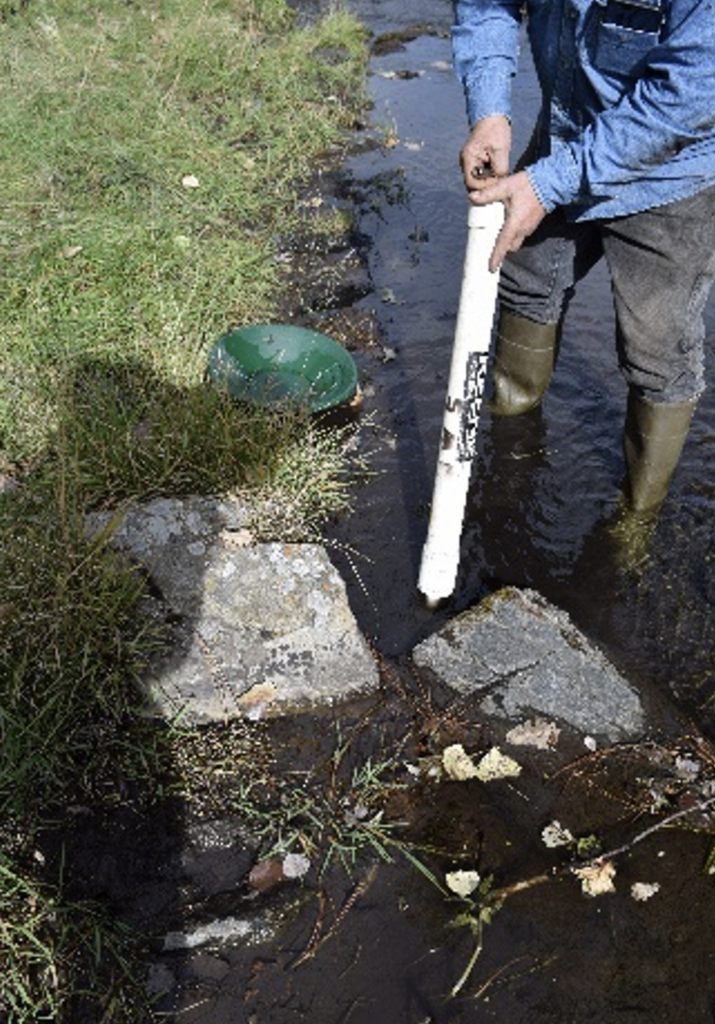
Before hopping into our modern-day mule/ ATV for the next leg of our journey, we have two more gold-prospecting methods to cover. First, while motorized suction dredging is prohibited in the Black Hills National Forest, you can use small hand-powered suction tubes/ dredges. Don points out places in the stream (inside bends with large boulders) and then demonstrates how to suction out dirt from behind the boulders. It’s a quick demonstration just so that I learn about this technique. Then we move on to metal detecting, which is also sometimes called “nugget shooting.”
I’ve done a fair bit of homework on gold nugget shooting and have come to learn that there is a vast range of machine prices and capabilities. Don assures me that there are machines that are both affordable and well suited to looking for gold nuggets in the Black Hills. There are people that have been metal detecting for 10 or 20 years; since they have honed their machine and prospecting knowledge and skills, a pricey machine might be worth the investment.
But Don says he has seen many beginners think that just having a $5,000 machine means they will readily find gold nuggets, only to become frustrated. The machine we’ll be using costs about $700, and even a seasoned pro like Don is confident that he won’t miss much with his detector. We go through several “metal detector tuning” steps like ground balancing, both on dry land and in the stream (the detector head is waterproof). Then we go back over to the bedrock outcropping where we dug out dirt to run through the stream sluice. Don works the whole area, even angling the head of the detector into crevices in the bedrock because gold will settle or become lodged in these tight spaces. Then we get a good signal in some of the topsoil we had removed, so we begin the process of elimination, slowly breaking apart dirt and grass clumps and using the “pin pointer” metal detector to see where we are getting a signal. We finish up the process in the gold pan and come to find out we’ve found some copper wire. Back at Don’s home we run some other pay dirt that he collected on another outing, and we are pleased to find a couple of nice-size nuggets that are about ¼ inch in diameter and relatively flat.
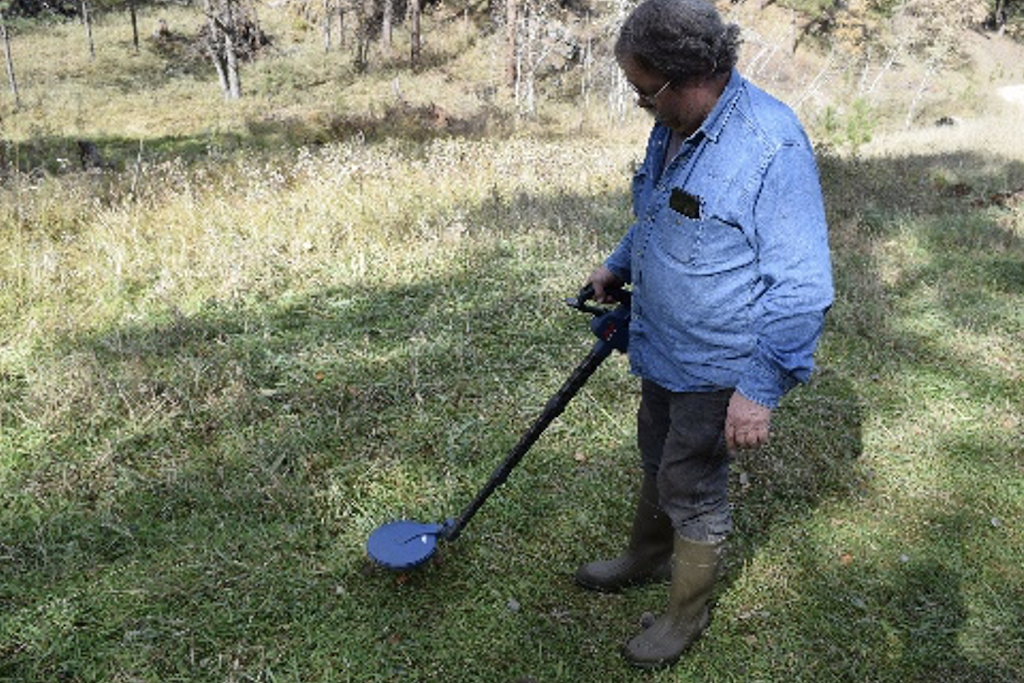
After packing everything up, we take a break and enjoy a small snack. The mule has been backed off the trailer, and we are ready to saddle up for a wild ride through the hills and valleys near Rockerville. As we ride deeper into the forest, Don pulls over from time to time and points out where a “flume” was constructed to wash placer gold out of areas that were known to have rich deposits. A flume is a water channel that has water pumped into it and then runs downhill and washes out any underlying rocks and minerals. And while the flume was short-lived, it still informs modern-day prospectors of the possibility of placer gold concentrations in the vicinity.
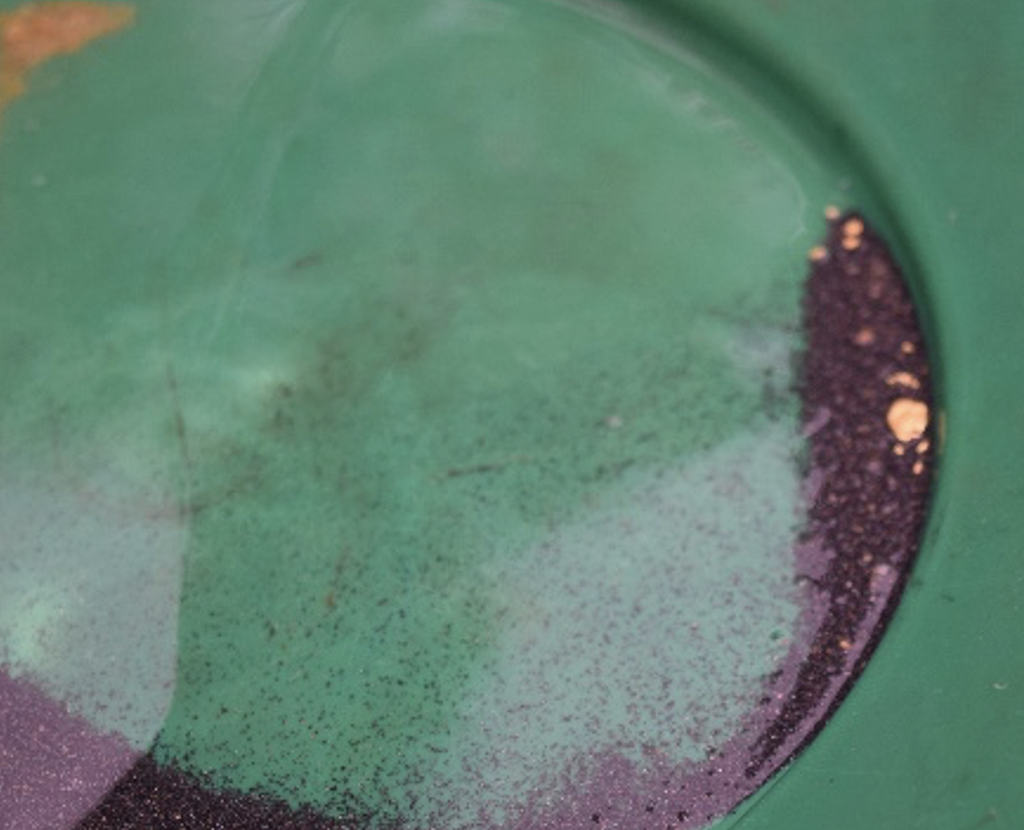
I ask Don about how a person can determine whether any of the land has an active gold-mining claim. Through my research I’ve learned that there are countless claims that are still legally in force. So, I’m expecting to see signs and other markers to let us know which land has an active claim. Don quickly disabuses me of this notion and only after a bit of scouting do we find some weathered signs that are no longer legible. In one case, a PVC pipe sticking up has details about the surrounding claim that it’s on. This means that if you want to do your own prospecting, you’ll need to go through a somewhat circular process of scouting out land, checking court records for claim filings, and then doing some actual prospecting, such as digging dirt and running test pans.
Don reminds me that there are two active gold-prospecting clubs that have their own claims, and members can help you navigate the process of creating your own claim. These are the two clubs:
- Black Hills Prospecting Club- https://www.blackhillsprospectingclub.com/
- Northern Hills Prospecting Club- https://m.facebook.com/Northern-Hills-Prospectors-100884432056602/
And with that reminder, we are now out and walking about one of the club’s claims. Don is once again describing some of the topology that suggests the possibility of gold deposits, pointing out the water source (a small pond) and some weathered quartz stones that also suggest the possibility of placer gold. We spend a good bit of time walking the area in and around the claim, and I’m treated to some amazing panoramic views. Now it’s time to get back to home base and try out some of the additional gold processing equipment that I mentioned earlier.
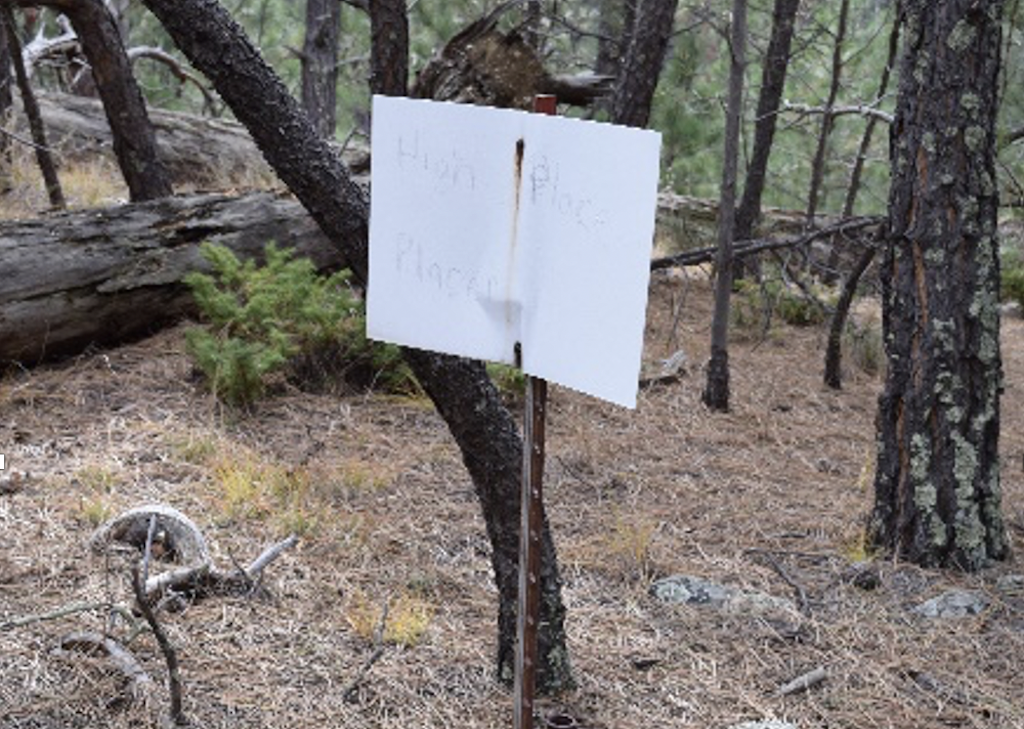
The first piece of equipment I’m keen to see is something called the gold cube. This is a three-stage/tray fine-gold capture device. Don has some pay dirt that he has collected previously, and we’re going to run it through the machine. It’s highly portable and only requires a 12-volt battery to pump water into the machine. Just as with the stream sluice box, pay dirt is gradually fed into the top tray—moving the shovel from side to side as the dirt is dropped in. After all of the dirt has been run through, we do a “cleanup” on each tray. And, true to the manufacturer’s claims, all the gold fines are captured in the top tray. We double-check the second and third trays in the gold pan, but nothing is found. By now I’ve learned that if there was even the tiniest speck of gold, Don’s panning expertise will capture it!
There are a couple of additional pieces of equipment that Don is keen to show me. He has a mini-trommel that can be connected to the gold cube. The trommel is a rotating cylinder that separates the dirt from rocks and feeds the slurry out into the gold cube or into a sluice box.
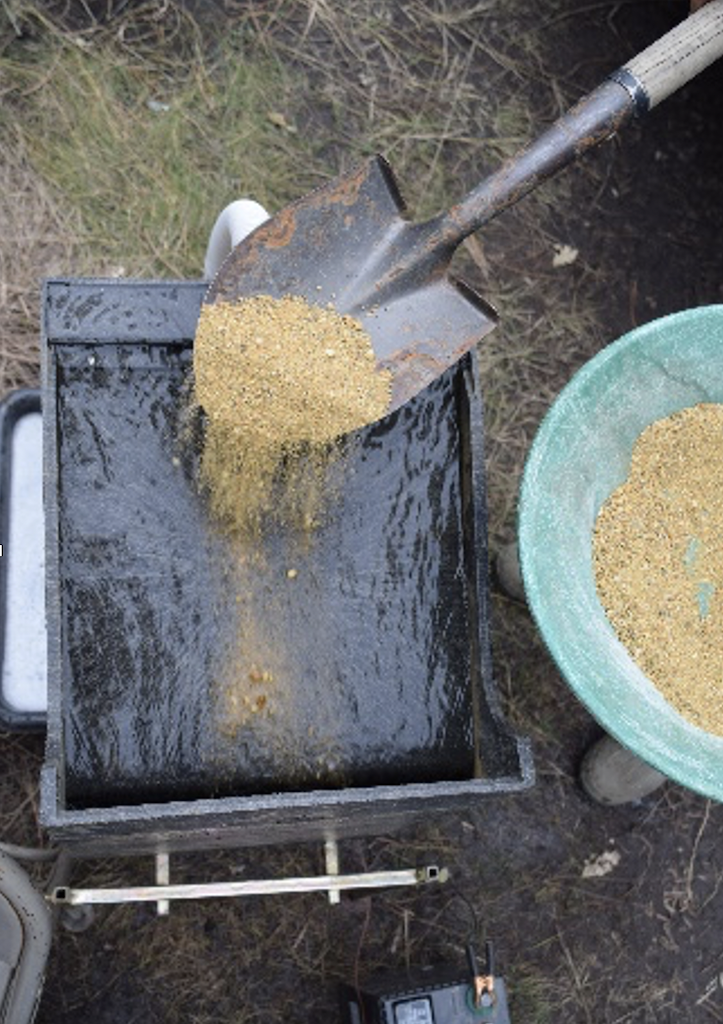
Don also has something called a rocker box. This is a sluice box with a handle for rocking the box back and forth to create water action on the riffles. Water is supplied by a pump that is fed with water from either a barrel or a stream. But it’s usually a barrel because this machine comes into play in areas like the Black Hills or in the southwest, where there are very limited water sources in proximity to where pay dirt is being excavated.
My head is swimming and dancing with visions of gold dust and gold nuggets. My host has gone above and beyond anything I imagined, and it’s clear that his real passion is to share his knowledge and pass it on to the next generation of Black Hills gold prospectors. We are grateful for the stewards of gem and mineral prospecting, of which Don Hamm is one of the very best!
Rock collecting is the treasure hunt of a lifetime, and the Upper Midwest is a wonderful place to start. Check out Jim Magnuson’s Rockhounding & Prospecting: Upper Midwest to find the most sought-after rocks and minerals.
If you enjoyed this post, sign up for our newsletter here!


